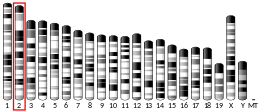
Cytochrome P450 2E1 is a member of the cytochrome P450 mixed-function oxidase system, which is involved in the metabolism of xenobiotics in the body. This class of enzymes is divided up into a number of subcategories, including CYP1, CYP2, and CYP3, which as a group are largely responsible for the breakdown of foreign compounds in mammals.
Toxication, toxification or toxicity exaltation is the conversion of a chemical compound into a more toxic form in living organisms or in substrates such as soil or water. The conversion can be caused by enzymatic metabolism in the organisms, as well as by abiotic chemical reactions. While the parent drug is usually less active, both the parent drug and its metabolite can be chemically active and cause toxicity, leading to mutagenesis, teratogenesis, and carcinogenesis. Different classes of enzymes, such as P450 monooxygenases, epoxide hydrolase, or acetyltransferases can catalyze the process in the cell, mostly in the liver.

The glycogen debranching enzyme, in humans, is the protein encoded by the gene AGL. This enzyme is essential for the breakdown of glycogen, which serves as a store of glucose in the body. It has separate glucosyltransferase and glucosidase activities.

Glyoxylic acid or oxoacetic acid is an organic compound. Together with acetic acid, glycolic acid, and oxalic acid, glyoxylic acid is one of the C2 carboxylic acids. It is a colourless solid that occurs naturally and is useful industrially.

In enzymology, a glycerate dehydrogenase (EC 1.1.1.29) is an enzyme that catalyzes the chemical reaction

Glyoxylate reductase, first isolated from spinach leaves, is an enzyme that catalyzes the reduction of glyoxylate to glycolate, using the cofactor NADH or NADPH.

In enzymology, an (S)-2-hydroxy-acid oxidase (EC 1.1.3.15) is an enzyme that catalyzes the chemical reaction

In enzymology, a malate synthase (EC 2.3.3.9) is an enzyme that catalyzes the chemical reaction

Peptidyl-glycine alpha-amidating monooxygenase, or PAM, is an enzyme that catalyzes the conversion of an n+1 residue long peptide with a C-terminal glycine into an n-residue peptide with a terminal amide group. In the process, one molecule of O2 is consumed and the glycine residue is removed from the peptide and converted to glyoxylic acid.

Serine—pyruvate aminotransferase is an enzyme that in humans is encoded by the AGXT gene.

Lathosterol oxidase is a Δ7-sterol 5(6)-desaturase enzyme that in humans is encoded by the SC5D gene.

Alcohol dehydrogenase 1A is an enzyme that in humans is encoded by the ADH1A gene.

Spermine oxidase is an enzyme that in humans is encoded by the SMOX gene.

Glyoxylate reductase/hydroxypyruvate reductase is an enzyme that in humans is encoded by the GRHPR gene.

60S ribosomal protein L41 is a protein that is specific to humans and is encoded by the RPL41 gene, also known as HG12 and large eukaryotic ribosomal subunit protein eL41. The gene family HGNC is L ribosomal proteins. The protein itself is also described as P62945-RL41_HUMAN on the GeneCards database. This RPL41 gene is located on chromosome 12.

Cytochrome c oxidase subunit 6A1, mitochondrial is a protein that in humans is encoded by the COX6A1 gene. Cytochrome c oxidase 6A1 is a subunit of the cytochrome c oxidase complex, also known as Complex IV, the last enzyme in the mitochondrial electron transport chain. A mutation of the COX6A1 gene is associated with a recessive axonal or mixed form of Charcot-Marie-Tooth disease.

Cytochrome c oxidase subunit 7B, mitochondrial (COX7B) is an enzyme that in humans is encoded by the COX7B gene. COX7B is a nuclear-encoded subunit of cytochrome c oxidase (COX). Cytochrome c oxidase is a multi-subunit enzyme complex that couples the transfer of electrons from cytochrome c to molecular oxygen and contributes to a proton electrochemical gradient across the inner mitochondrial membrane, acting as the terminal enzyme of the mitochondrial respiratory chain. Work with Oryzias latices has linked disruptions in COX7B with microphthalmia with linear skin lesions (MLS), microcephaly, and mitochondrial disease. Clinically, mutations in COX7B have been associated with linear skin defects with multiple congenital anomalies.

Acyl-coenzyme A thioesterase 11 also known as StAR-related lipid transfer protein 14 (STARD14) is an enzyme that in humans is encoded by the ACOT11 gene. This gene encodes a protein with acyl-CoA thioesterase activity towards medium (C12) and long-chain (C18) fatty acyl-CoA substrates which relies on its StAR-related lipid transfer domain. Expression of a similar murine protein in brown adipose tissue is induced by cold exposure and repressed by warmth. Expression of the mouse protein has been associated with obesity, with higher expression found in obesity-resistant mice compared with obesity-prone mice. Alternative splicing results in two transcript variants encoding different isoforms.

Cytochrome c oxidase subunit VIa polypeptide 2 is a protein that in humans is encoded by the COX6A2 gene. Cytochrome c oxidase 6A2 is a subunit of the cytochrome c oxidase complex, also known as Complex IV, the last enzyme in the mitochondrial electron transport chain.

Hydroxyacid oxidase 2 is a protein that in humans is encoded by the HAO2 gene.




















